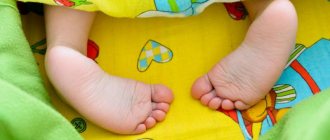Progress of observation:
-What sky?
-What clouds?
-What do they look like?
Draw children's attention to the sky. At the beginning of autumn it is still clear, blue, clouds are floating across the sky. Consider how beautiful they are: white, fluffy, “light, airy, obedient to the breeze”
, look like pieces of cotton wool.
Woven from lace
Birds-clouds.
Maybe it's a fairy tale
Rushing through the centuries?
Folk sign: if the sky is covered with many crowded “small lambs”
- to rain, but if the clouds take on sharp outlines and the distance between them increases, there will be no rain.
Games and game exercises:
“What does a cloud look like?”
Search activity:
Find similarities between clouds and animals. "Metamorphosis"
in animals, imitating their movements.
Labor activity:
Collect leaves, pebbles, sticks in buckets, pour into large buckets.
Goal: to instill basic labor skills.
Outdoor games:
"Tumala - aash"
Purpose: to train children in fast running; develop attention and observation.
"Catch a mosquito"
.
Purpose: to train children in jumping; develop dexterity of movements.
Individual work:
"Roll the ball"
.
Purpose: to train children in rolling the ball to each other; develop the eye.
Card No. 3
Watching the wind
Goal: to form first ideas about some phenomena of inanimate nature.
MAGAZINE Preschooler.RF
Educator: Tselishcheva T.S. 2014 Walk in the middle group. Theme: Spring is red. Goal: Continue acquaintance with various natural phenomena; improve your ability to distinguish the weather. Develop mindfulness. Maintain a joyful, gracious, good mood. Progress of the walk. - Let's say hello to the guests. Today is a joyful day! Really, guys? Do you know why there is joy in our group? Joy ran along the path Joy opened all the windows Joy woke up all the children Joy invited guests to us. — We stood on the meadow and made a circle.Surprise moment: A swallow flies to the children with tasks. (child, a cap on his head.) The swallow recites his poem. (The grass turns green...) Listen to the riddle. The snowball is melting The meadow has come to life, The day is coming When does this happen? (In spring) Questions from the swallow: 1. How many spring months are there (3) 2. . Which? In chorus: March, April and May - don’t forget them 3. What warms, shines, scorches in the spring? (Sun) 4. What is hanging from the roof, dripping, melting? (icicle) 5. In the spring does it melt, cry, settle? (snowman) 6. what gets dark in the spring, melts, runs away with water (snow) 7. what runs, murmurs, sings in the spring (stream) 8. a flower growing from under the snow (snowdrop) 9. birds that fly away in the fall and arrive in the spring (migratory) 10. a piece of land where the snow melted? (thawed patch) 11. What are you wearing. Signs of spring: - In ancient times, people observed changes in nature, its phenomena, plants, birds, caught and remembered various signs. Here's what they said: Early spring has a lot of water. I saw a rook - welcome spring. The snow will melt soon - for a wet summer. - Spring has come to us. Have you already guessed that we will talk about WHAT today? People have long loved spring. They called it spring - red. All nature wakes up in spring, after the winter cold. Green grass appears, the first flowers appear, birds fly in.
The teacher invites the children to compose a “Portrait of Spring”
Vos: - Spring is the transition from winter to summer. Child 1: - The sun is shining brightly and hot. (sun) 2: - The buds are swelling on the trees and small leaves are appearing. (trees) 3: - Birds are returning from warm regions. (birds) Music 3: - The ice on the rivers also melts, it breaks into ice floes and floats down the river. They say there is ice drift on the river. (ice drift) 5: - Melted snow creates cheerful streams and large puddles (Streams) 6: - Thaw is a place where the snow has melted and the earth has opened up. 7: - In the forest, in the thawed areas, the first flowers appear - snowdrops (snowdrops) 8: - The snow begins to melt, icicles appear, drops ring. (icicles) - Guys, listen to the music. And think about what it reminds you of? Music - What kind of spring have we had? children's answers (cheerful, ringing, fragile, transparent, shiny) Poems about spring.
1. “The snow is melting.” the snow has melted, the snow has melted, This is not easy news, This means the Real Spring is coming! 2. “The day is longer.” Every day, every minute, the day is longer, the night is shorter. We are slowly driving Winter away!
3. Drops begin. The spruce has warmed up in the sun, the pine has melted, April is coming, the drops are ringing, It’s spring in our forest!
4. Birds arrive. The last snow in April is melting. Everyone is happy about the sun and spring, Spring arrives in April, With a cheerful swallow coming to me! Outdoor game: “Planes” (4 times) Purpose: To develop the ability to navigate in space and move without bumping into each other. Progress of the game: Children are divided into four units and placed at different ends of the site. Each person is given homemade airplanes (yellow, green, black, orange). The players portray pilots.
At the teacher’s command “Get ready to fly!” the children make circular movements with their arms, says the teacher, they raise their arms to the sides and run in different directions throughout the entire area. “Planes are flying and don’t want to land on the ground. They are flying merrily in the sky, but they won’t collide with each other. Suddenly a large cloud flies in. It has become dark all around. Planes - form a circle” (planes of the same color line up in a circle and go down on one knee). The teacher notes which link was built faster. 3. Labor activity. Collect waste on site into boxes. — Guys, there was a wind at night and visited our site and brought garbage. Let's remove it together. 4. Individual work.
“Throw it to the skies” (ball game) Goal: Improve the ability to throw and catch the ball. Promote the development of motor skills. Develop dexterity and attention. Children are divided into groups. They toss the ball.
Games based on interests.
| Next > |
Progress of educational activities:
We stretched our hands to the sun,
We took the ray and pressed it to our hearts,
We smiled, gave the guests a ray of light,
Hello, guests, we have been waiting for you all!
There are carrots, there is cabbage, there is a delicious smell of strawberries.
And, friends, we can’t let the goat in there. (children's answers)
-That's right, this is a vegetable garden . Who guys have a garden ? How many of you like to work in the garden ? What kind of work do you do in your garden plot to grow a good harvest? (children's answers)
1. Whoever does not lie down in the spring will be fed for a whole year.
2. A spring day feeds the year.
-We live in an area where there are quite long and cold winters and warm summers. But summer is not long enough for all the vegetables to ripen. What do they build in vegetable gardens for faster growth and ripening of vegetables?
— There is a house at my grandmother’s dacha, covered with a transparent film on top.
But my grandparents don’t live in it; tomatoes grow in that house.
No matter what happens to the weather in spring, the house will cover both cold and heat.
(Greenhouse, greenhouse)
Demonstration of illustration.
- And also, what kind of faithful assistant friends a person has in his garden , besides greenhouses and greenhouses, you will find out by guessing the riddles.
“Guess the riddles”
(with illustrations)
.
A long, black snake crawled into the yard,
Watered our garden , didn’t yawn at work (hose)
They made it out of boards and put on a belt,
And these dishes store the summer collected (barrel)
Two brothers went to the river to swim.
One is swimming, the other is waiting on the shore.
They go to the river and dance, and when they leave the river they cry (buckets)
They stand in a single row, sharp scratches.
It is convenient to use them to scoop up armfuls of garbage (rakes)
The cloud is made of iron, and the cloud has a handle.
(watering can) in order.
I dug the earth, leveled the beds,
I broke through streams and was not at all tired (shovel)
- And now I suggest you lay out the tools you most often need to work with in the garden .
“Put out instruments from sticks”
Lay out the outlines of a shovel and rake from sticks.
— Guys, today our group received a letter from Grandma Zabavushka. She asks us to help her. She writes that she has become old, weak, cannot work in the garden , and there is no one to help her. Shall we help? Then get up, let's go to the garden .
Physical education “ We’ll go to the garden... ”
to the garden and start a round dance. (Walk in a circle holding hands)
In a round dance, let’s take a radish and sit down with it low and low. (Squat)
Let's take a carrot into a round dance, and dance cleverly with the carrot. (Dance moves)
Let's stretch up with a bow (Reach up, rising on tiptoes)
Let's run after the zucchini (They run in a circle one after another)
And let's jump along the path like green peas. (They jump in circles one after another)
Game "Find the tool"
- Look carefully at this picture and name what kind of tools are hidden here. (Children's answers)
Task “Trace the dots and shade”
-Now complete the task on your pieces of paper. Connect the dots with lines and shade. What kind of tools did you get? (Children's answers)
— There are a lot of tools. Guys, look, are there any extra tools here?
Grandma also left some pictures to make it clearer how to plant. Now I want to test you to see if you know how to plant plants. Look at these pictures and put them in order: what happened first and what came next. Arrange the pictures in order. Do you know how to sow and plant? Well, what does it take to grow vegetables? Prepare a bed, make furrows, plant seeds in the ground, water. So, what do plants need to grow well? Soil, water, warmth, What great fellows you are! What a great job they did .
Summary of directly organized activities on cognitive development in the middle group “People’s work in spring” Purpose: To acquaint children with the work of adults in the spring. Objectives: • update children’s knowledge about the season - spring • repeat.
Summary of continuous educational activities in the preparatory group for cognitive development “The ABC of Safety” Summary of continuous educational activities in the preparatory group for cognitive development “ABC of Safety” Purpose: to consolidate. Abstract of educational activities on cognitive development “In the garden or in the vegetable garden” in the senior group Synopsis of direct educational activities cognitive development “In the garden or in the vegetable garden” in the senior group Program content.




